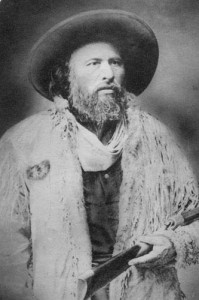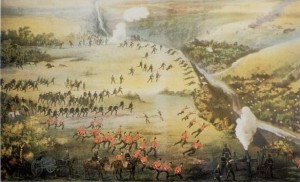 Gabriel Dumont’s role in the Northwest Rebellion of 1885 is well known to Métis Canadians, and many people in our three prairie provinces, but otherwise he is overshadowed by the more romantic figure of Louis Riel. Riel, after all, had religious visions, underwent martyrdom, and left a written legacy. His instability is the stuff that attracts attention, and he’s the one that’s been treated in novels, plays, movies, songs, and even an opera. But in many ways, Dumont is a more interesting man, and deserves more respect than the dubiously sane Riel. George Woodcock, in this short biography, emphasizes how much Dumont exemplified the most admirable aspects of Métis society.I should make the background clear for non-Canadians, who know little of our history. During the course of the 18th century, a new culture appeared in the Canadian west, which fused European and Native Canadian elements into something more than just a half-way status between the two. Métis society was multi-lingual, though French was its most commonly used language. Native Canadian languages (predominantly Cree) were also used by them, as well as Gaelic, English, and two new languages, Michif and Bungee, which combined all of these elements [see my discussion of this a review of Li Paviyóñ di Michif]. Beginning as traders and guides employed by the North West Company and the Hudson’s Bay Company, they fanned out into a huge area of the western forests, parklands, prairies, and mountains. When they outgrew and out-populated the dwindling fur trade, they hunted buffalo on the plains. Gradually, during the course of the 19th century, they turned to farming, the running of cart caravans for bulk transport, inn-keeping, and store-keeping. While the Métis occasionally skirmished with Sioux and Blackfoot war parties, they generally employed their gift for self-government and diplomacy, combined with remarkable military skills, to keep the peace on the plains — a factor ignored by most Canadian historians.
Gabriel Dumont’s role in the Northwest Rebellion of 1885 is well known to Métis Canadians, and many people in our three prairie provinces, but otherwise he is overshadowed by the more romantic figure of Louis Riel. Riel, after all, had religious visions, underwent martyrdom, and left a written legacy. His instability is the stuff that attracts attention, and he’s the one that’s been treated in novels, plays, movies, songs, and even an opera. But in many ways, Dumont is a more interesting man, and deserves more respect than the dubiously sane Riel. George Woodcock, in this short biography, emphasizes how much Dumont exemplified the most admirable aspects of Métis society.I should make the background clear for non-Canadians, who know little of our history. During the course of the 18th century, a new culture appeared in the Canadian west, which fused European and Native Canadian elements into something more than just a half-way status between the two. Métis society was multi-lingual, though French was its most commonly used language. Native Canadian languages (predominantly Cree) were also used by them, as well as Gaelic, English, and two new languages, Michif and Bungee, which combined all of these elements [see my discussion of this a review of Li Paviyóñ di Michif]. Beginning as traders and guides employed by the North West Company and the Hudson’s Bay Company, they fanned out into a huge area of the western forests, parklands, prairies, and mountains. When they outgrew and out-populated the dwindling fur trade, they hunted buffalo on the plains. Gradually, during the course of the 19th century, they turned to farming, the running of cart caravans for bulk transport, inn-keeping, and store-keeping. While the Métis occasionally skirmished with Sioux and Blackfoot war parties, they generally employed their gift for self-government and diplomacy, combined with remarkable military skills, to keep the peace on the plains — a factor ignored by most Canadian historians.
As the prairies came under the nominal authority of Canada, and settlers from the east began to arrive, the Métis at first tried to get Canada to perform the necessary functions of government. When this met with little action, they simply expanded their traditional forms of democratic self-rule to fit the need. Later, when it could see profits in the West, the Federal Government proceeded to ride roughshod over the Métis, ignoring their property rights and orderly civil government, and treating them as if they didn’t exist. Lands that had been pioneered and farmed were simply seized and handed over to the railroad and to eastern speculation companies. A long series of such outrages culminated in the Red River Rebellion of 1869–70, led by Riel. Riel’s elected Provisional Government negotiated with Canada to create the new province of Manitoba, but Riel himself went into exile. By 1884, the same problems came to a head further west, in what is now Saskatchewan. There, the predominantly Métis community had formed a well-functioning government, with Dumont as President. Long the leader and the organizer of the buffalo hunts, he had a natural talent for politics, but, unlike the religiously educated Riel, he remained illiterate.
Woodcock describes the organization of one of the great buffalo hunts of Dumont’s youth. 1,630 men, women and children participated, moving across the plains on horseback, accompanied by 1,210 bullock carts, necessary to carry the processed buffalo meat. They were mostly Métis, but non-Métis of any origin were welcome to participate if they had the inclination and the skill. By tradition, a council of ten chiefs of the hunt were elected, among whom one was chosen as primum inter pares. Each of these chose ten deputies. When the expedition was not in motion, that is, when it was camped at any place on the journey, or during the hunt itself, these exercised the necessary planning and authority. While they were in motion, however, their authority gave way to the Guides. The ten guides worked on a rotational basis. The raising of the Métis flag signal the transition from the Camp authority to the Guide’s authority, and each guide directed the expedition’s travel for one day, when the flag descended. The next day, another of the ten fulfilled the same role. It was this kind of sophisticated democratic experience that the Métis brought to their own self-government when they settled down to farm, that they expected from the Canadian government when it claimed jurisdiction over them, and which they employed in their two provisional governments when they rebelled against Canada.
 It is that talent for self-government that most interested George Woodcock, and Dumont exemplified it far more than Riel. When the Métis of the Q’appelle River region reached a state of crisis, Dumont was appointed to travel to Minnesota and bring Riel back from exile. Riel had, of course, the charisma and the religious streak that made him seem the appropriate leader. He was, after all, the closest thing that the Métis had to a literate intellectual, and even in exile he had twice been elected to the Canadian Parliament. But when Prime Minister John A. MacDonald’s pig-headed policies drove the Métis into armed rebellion, Riel was utterly dependent on Dumont to build a militia and put it up against the Canadian army. That army was quick to recognize Dumont as a brilliant commander and tactician, as he consistently defeated larger and better armed forces. But Riel was deaf to Dumont’s pleading that guerilla tactics aimed at disrupting rail and telegraphy were necessary, and that a firm alliance with the Cree was a political necessity. Ultimately, Riel’s mysticism and charisma led the rebellion to disaster. Dumont had people’s respect, but not that bizarre, disaster-making stuff that everybody seems to admire more than virtue, skill, or good sense.
It is that talent for self-government that most interested George Woodcock, and Dumont exemplified it far more than Riel. When the Métis of the Q’appelle River region reached a state of crisis, Dumont was appointed to travel to Minnesota and bring Riel back from exile. Riel had, of course, the charisma and the religious streak that made him seem the appropriate leader. He was, after all, the closest thing that the Métis had to a literate intellectual, and even in exile he had twice been elected to the Canadian Parliament. But when Prime Minister John A. MacDonald’s pig-headed policies drove the Métis into armed rebellion, Riel was utterly dependent on Dumont to build a militia and put it up against the Canadian army. That army was quick to recognize Dumont as a brilliant commander and tactician, as he consistently defeated larger and better armed forces. But Riel was deaf to Dumont’s pleading that guerilla tactics aimed at disrupting rail and telegraphy were necessary, and that a firm alliance with the Cree was a political necessity. Ultimately, Riel’s mysticism and charisma led the rebellion to disaster. Dumont had people’s respect, but not that bizarre, disaster-making stuff that everybody seems to admire more than virtue, skill, or good sense.
Images:
above: Gabriel Dumont [source: Saskatchewan Archives / Encyclopedia of Saskatchewan]
below: Battle of Fish Creek, 24 April 1885. This print of the 24 April 1885 battle of Fish Creek was based on sketches by a Toronto militiaman who was part of General Middleton’s column. 150 Métis and Teton Sioux led by Gabriel Dumont attempted to ambush the 900 Canadians as they approached the deep ravine of Fish Creek. The inexperienced militia spent the day trying to drive Dumont from his position without success. Although the battle itself was a stalemate, the Canadians retreated and halted their advance towards Batoche for two weeks. The figures in green are the 90th Winnipeg Battalion of Rifles, while those in red are the 10th Battalion Royal Grenadiers (who did not really take part in the fighting). [source: Government of Canada: Canadian Military Heritage web resource]
0 Comments.